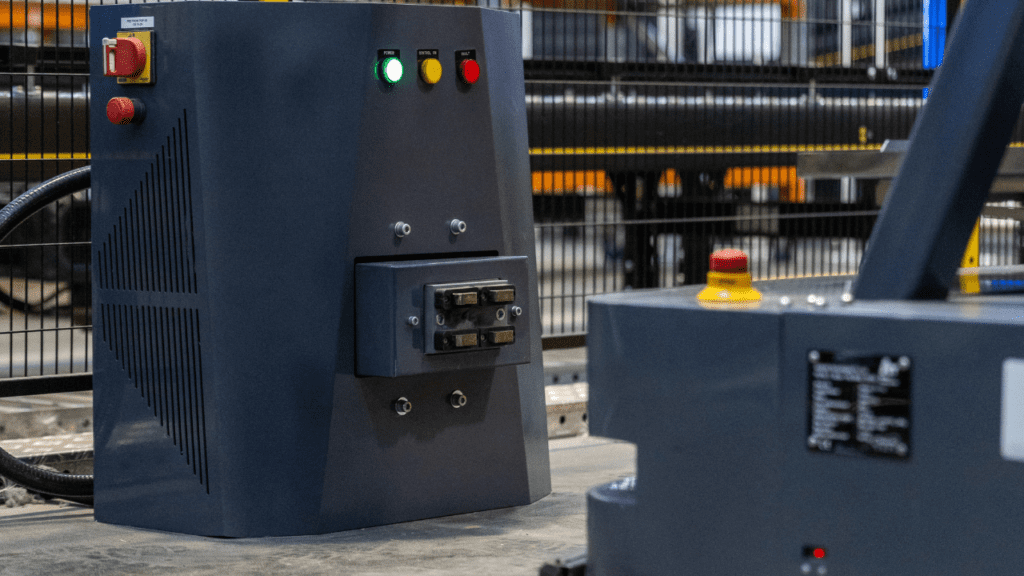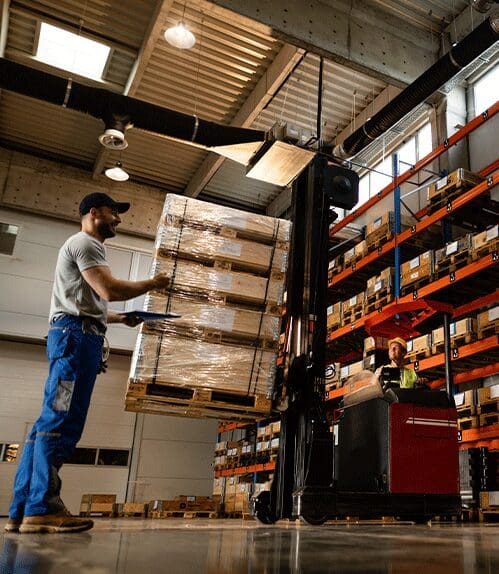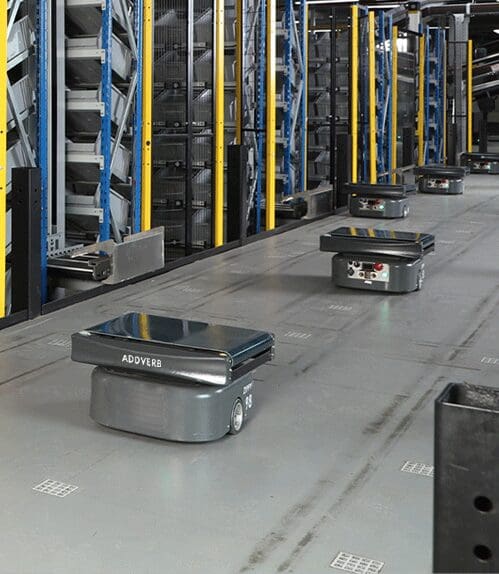As the manufacturing industry shifts from mass production to mid-volume and mid-variety, flexible manufacturing systems are on the rise. These systems demand machine flexibility and flexible material handling, storage, and retrieval systems. Components of Mobile Robots, being the most versatile material movement system, have garnered well-deserved attention over time.
To gain a comprehensive understanding of the technical aspects of a mobile robotic system, let’s delve deeper into its constituent parts and key components of mobile robots.
Components of Mobile Robots
Sensors: The Robot’s Eyes and Ears
Sensors are fundamental to a mobile robot’s ability to perceive and interact with its environment. They collect data that helps the robot understand its surroundings, avoid obstacles, and perform tasks with precision. Common sensors include:
- LiDAR (Light Detection and Ranging): LiDAR uses laser beams to create detailed 3D maps of the environment, enabling the robot to detect obstacles, measure distances, and navigate with high accuracy.
- Cameras: Visual sensors capture images and video, which are crucial for tasks requiring object recognition, tracking, and inspection.
- Ultrasonic Sensors: These sensors use sound waves to detect objects and measure distances, often used in proximity detection to prevent collisions.
- Infrared Sensors: Useful for detecting heat signatures and proximity sensing in low-light conditions.
Actuators: The Muscles of the Robot
Actuators are the components responsible for movement in mobile robots. They convert electrical signals into mechanical motion, enabling the robot to move its wheels, arms, or other parts. Key types of actuators include:
- Electric Motors: These are the most common actuators, providing precise control over the robot’s movements. They are essential for driving wheels, moving arms, or adjusting sensors.
- Hydraulic Actuators: Often used in heavy-duty robots, these actuators provide powerful movements, suitable for tasks requiring significant force.
- Pneumatic Actuators: These actuators use compressed air to create motion, often found in robots that perform repetitive tasks like pick-and-place operations.
Power Supply: The Robot’s Energy Source
The power supply is a critical component, determining the robot’s operational duration and capability. Mobile robots are typically powered by:
- Batteries: Lithium-ion batteries are popular due to their high energy density and rechargeability. They provide the necessary power for long-duration tasks.
- Fuel Cells: Some advanced robots use hydrogen fuel cells, which offer longer operational times and quick refueling but are more complex and costly.
- Solar Panels: For outdoor or field robots, solar panels can supplement power, extending operational time in sunny environments.

Control System: The Brain of the Robot
The control system is the central processing unit (CPU) of a mobile robot, coordinating all its functions. It processes data from sensors, makes decisions, and sends commands to actuators. The control system includes:
- Microcontrollers: These are small computing devices that manage specific tasks, like controlling motors or processing sensor data.
- Onboard Computers: For more complex operations, robots may use full-fledged computers, often running operating systems like ROS (Robot Operating System) to handle advanced tasks like path planning, machine learning, and data analysis.
- Embedded Systems: These are specialized computing systems that are embedded into the robot to perform dedicated functions efficiently.
READ MORE: A Guide to 5 Types of Mobile Robots and How They’re Used
Navigation and Mapping Systems: The GPS of the Robot
For a mobile robot to move autonomously, it must know its location and how to reach its destination. This is where navigation and mapping systems come into play. These systems include:
- Closed Path Navigation: This system is typically used in Automated Guided Vehicles (AGVs), where a predetermined route is established using physical objects like wired navigation technology or guided tape systems. It provides a fixed and reliable path, ideal for environments with consistent and repetitive tasks.
- Open Path Navigation: Mobile robots utilize advanced open-path systems like laser sensor navigation or LiDAR-based natural navigation. These systems allow the robots to dynamically determine the best path in real-time, adapting to environmental changes and offering greater flexibility. The choice between closed and open path systems depends on the specific operational requirements and the environment in which the robots will operate.
Communication Systems: The Robot’s Voice and Ears
Communication is vital for mobile robots, especially in collaborative environments where they interact with other robots, systems, or human operators. Communication components include:
- Wireless Communication: Wi-Fi, Bluetooth, and other wireless technologies enable real-time data exchange between the robot and external systems.
- RFID (Radio Frequency Identification): RFID is used for identifying and tracking objects, often employed in logistics and inventory management.
- IoT (Internet of Things) Integration: IoT enables mobile robots to connect to cloud platforms, facilitating remote monitoring, data analysis, and control.
READ MORE: Mobile Robots: Functional Challenges
Chassis and Structural Components: The Skeleton of the Robot
The chassis is the structural framework of a mobile robot, providing the physical foundation for all other components. It needs to be robust, lightweight, and adaptable to different environments. Structural components include:
- Frame: The main body that houses all the other components. It’s typically made from materials like aluminum, steel, or carbon fiber for durability and weight efficiency.
- Wheels/Tracks: Depending on the terrain, robots may use wheels for smooth surfaces or tracks for rough, uneven terrain.
- Suspension Systems: These systems help the robot maintain stability and smooth operation on uneven surfaces.
Conclusion
The seamless operation of a mobile robot is a result of the harmonious integration of various critical components. Each part, from sensors to control systems, plays a pivotal role in enabling the robot to navigate, perceive, and interact with its environment autonomously. Understanding these components not only highlights the complexity and sophistication of mobile robots but also underscores the importance of each element in achieving optimal performance. As technology advances, these components will continue to evolve, driving the next generation of mobile robots to new heights of efficiency and capability.
FAQ
What role do sensors play in mobile robots?
Sensors help the robot perceive its environment, enabling obstacle detection, localization, and mapping.
Why are actuators important in mobile robots?
Actuators are responsible for the movement of the robot, converting electrical signals into physical motion.
How does the control system influence a mobile robot’s performance?
The control system processes sensor data to make real-time decisions, guiding the robot’s actions and behavior.
What types of power supplies are used in mobile robots?
Common power supplies include batteries, fuel cells, or hybrid systems, depending on the robot’s size and application.
What is the importance of the chassis or frame in mobile robots?
The chassis provides structural support, housing all components and ensuring durability and stability.
How do wheels or tracks impact a mobile robot’s mobility?
Wheels or tracks determine the robot’s ability to navigate different terrains, influencing speed and maneuverability.
Why is battery management critical for mobile robots?
Effective battery management ensures optimal performance and extends operational time by monitoring and conserving power.
How do mobile robots achieve precise navigation?
They use a combination of sensors, localization techniques, and algorithms to navigate accurately within their environment.
What role do software and algorithms play in mobile robots?
Software and algorithms govern the robot’s decision-making, path planning, and execution of tasks autonomously.
How do safety systems integrate into mobile robots?
Safety systems, such as emergency stop functions and collision avoidance, are integrated to protect both the robot and its surroundings.
Founded in 2016, Addverb offers complete robotics solutions for warehouse and industrial automation, with a strong global presence through its subsidiaries worldwide. The company provides a range of in-house automation products, including Autonomous Mobile Robots, ASRS, and sorting technologies. It serves over 350+ clients, including well-known companies such as Coca-Cola, Amazon, and DHL.






